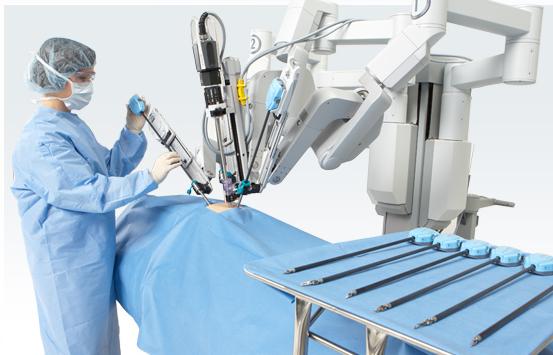Artificial intelligence and robotic surgeries are the future of health care. These technologies can automate new tasks, and we are making more of them, faster, better, and cheaper than ever before. At present, about 4000 surgical robots are in current use, mostly using a patented system that has been approved by the US Food and Drug Administration.
Using four arms that connect into ports with the surgeon sitting at his own machine — like a video game essentially — the da Vanci XI Surgical System provides doctors with 3D visualization, great magnification in the body to perform precise and delicate maneuvers and ability to see small structural issues.
Doctors have seen decreased rates of infection, decreased length of stay in the hospital and faster return to baseline function so patients are better prepared if they need to undergo additional treatment beyond surgery.
Over a third of U.S. hospitals have at least one surgical robot. Such robots have been in widespread use by a growing variety of surgical disciplines, including urology and gynecology, for over a decade. That means the technology has been around for least two generations of surgeons and surgical staff.
Surgical systems can generally lead to fewer and smaller incisions, less blood loss, shorter hospital stays, faster recoveries and fewer scars than traditional open surgery. In addition, w ith a 3-D view, surgeons can perform the surgery by operating the controllers, resulting in greater control over the surgical instruments and higher precision.
If we’re not careful, we may unwittingly improve our way out of the skill we need to meet the needs of a changing world.


